Energenie MiHome Heating Review
Energenie MiHome Heating Review
Nest integration makes this system stand out – but it's fiddly to use
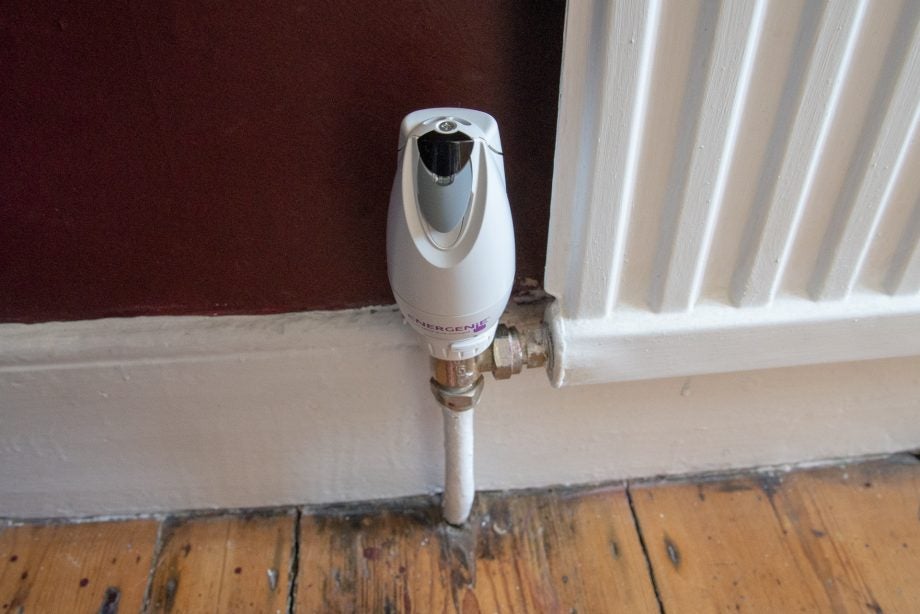
Verdict
The Nest integration seems promising, with the Energenie MiHome Heating offering individual radiator control. However, the simplistic app and inability of radiator valves to call for heat take the shine off. A smarter and easier to control app would dramatically improve matters.
Pros
- Lets you control your Nest thermostat
- Low-price smart radiator valves
Cons
- Radiator valves can't call for heat
- Geofencing a pain to configure
- Fiddly app
Key Specifications
- Review Price: £144
- Smart radiator valves with optional thermostat
- On/off boiler control
- Geofencing
- Amazon Alexa and Google Assistant integration
Heating individual rooms is the best way to achieve the biggest savings on your heating bill, and the Energenie MiHome Heating system promises to offer one of the simplest ways to do this. Its smart eTRVs can operate by themselves, integrate with the Nest Learning Thermostat, or you can add an Energenie Thermostat for direct heating control.
It’s a promising start, then – but the clunky app and basic control over individual rooms means there are better alternatives available.
Energenie MiHome Heating – What you need to know
- Heating configuration – The eTRVs can be installed on any radiator, but you can’t set schedules per room and they can’t call for heat-limiting options. The Nest integration is welcome, but the interaction between radiator valves and the Nest Thermostat could be better.
- Heating performance – There are precious few controls on the eTRVs, and you can only boost the temperature in a room to 21ºC. Basic scheduling lets you set the temperature you want, when you want it, but it would make more sense if the eTRVs could call for heat when required.
The Energenie MiHome Heating can integrate with Nest, but the features are basic at best
To get the Energenie MiHome Heating system running, you need the MiHome Gateway, which plugs into your router. It’s a bog-standard white plastic box, which you’ll definitely want to place in a discreet location. Once installed, and hooked up to the smartphone app, you can add in the eTRV smart radiator valves to your system.
There are multiple packs available, including a set of three eTRVs and Gateway for £144. Depending on the quantity you buy in, the eTRVs can cost as little as £30 each, which makes these the cheapest smart radiator thermostats I’ve tested.
As with other smart radiator valves, the eTRVs need to be screwed onto an existing radiator valve, providing remote control over a radiator. You get a couple of adapters in the box, which should cover most existing radiator valves. The Energenie eTRV doesn’t have a screen, so you can’t see the temperature it’s set to. There’s only one button, too: press for two seconds and the eTRV sets itself to the Comfort Temperature Setting (21ºC) for one hour.
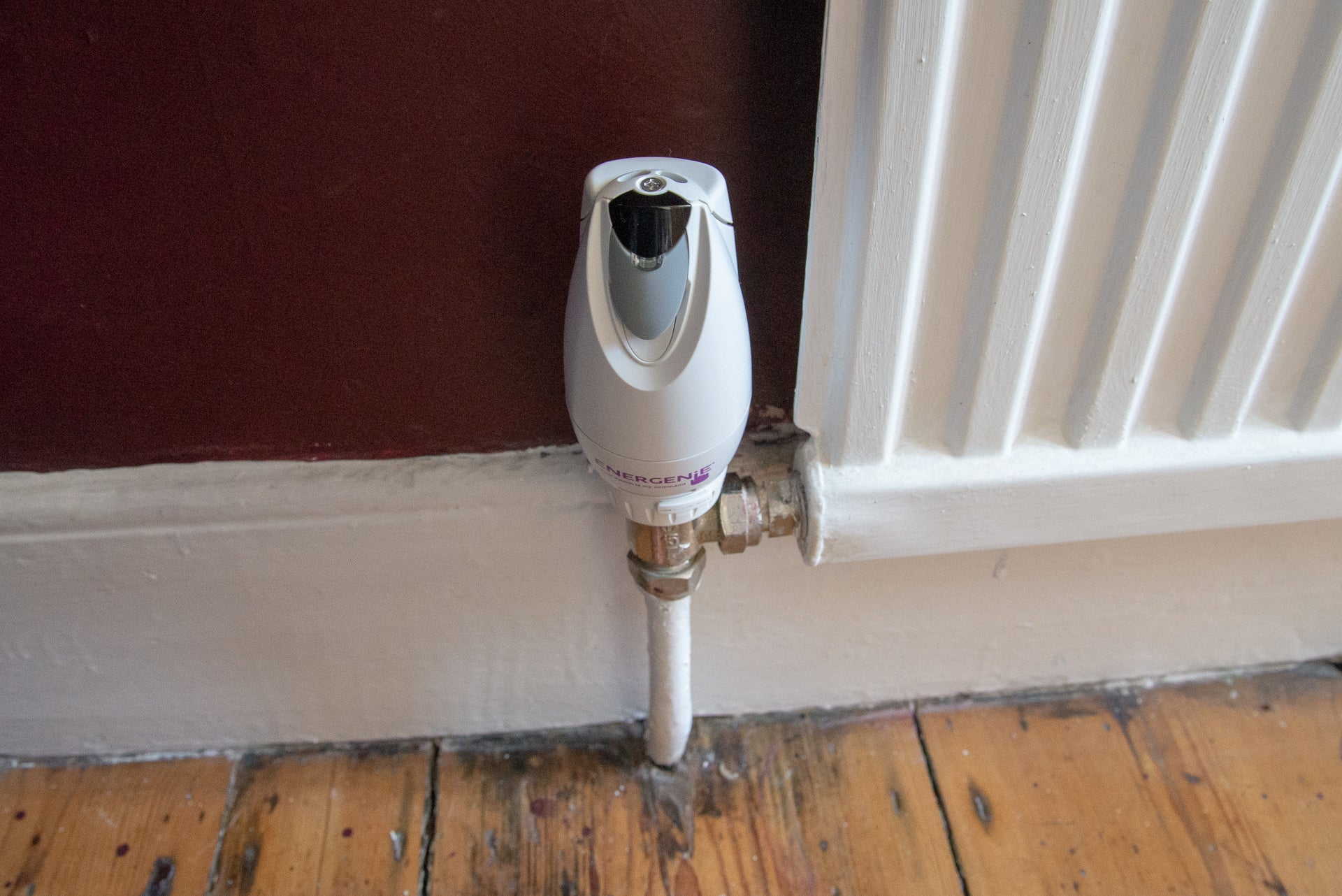
The Energenie MiHome Heating eTRVs have just a single button for control
As the eTRV springs into action, you can hear its motor whirr as it adjust the radiator valve. As is the case with similar products from other manufacturers, the valve is loud enough to hear and will take a while to get used to in some rooms, such as bedrooms.
Full control is through the app. At its most basic, you can view the current and target temperatures of each eTRV and can override the set temperature. You can also set a schedule, defining the temperatures you want at the times you want. There’s full customisation, and you can choose to have a different schedule for each day. Sadly, there’s no way to copy schedules between rooms, so you need to configure each eTRV manually.
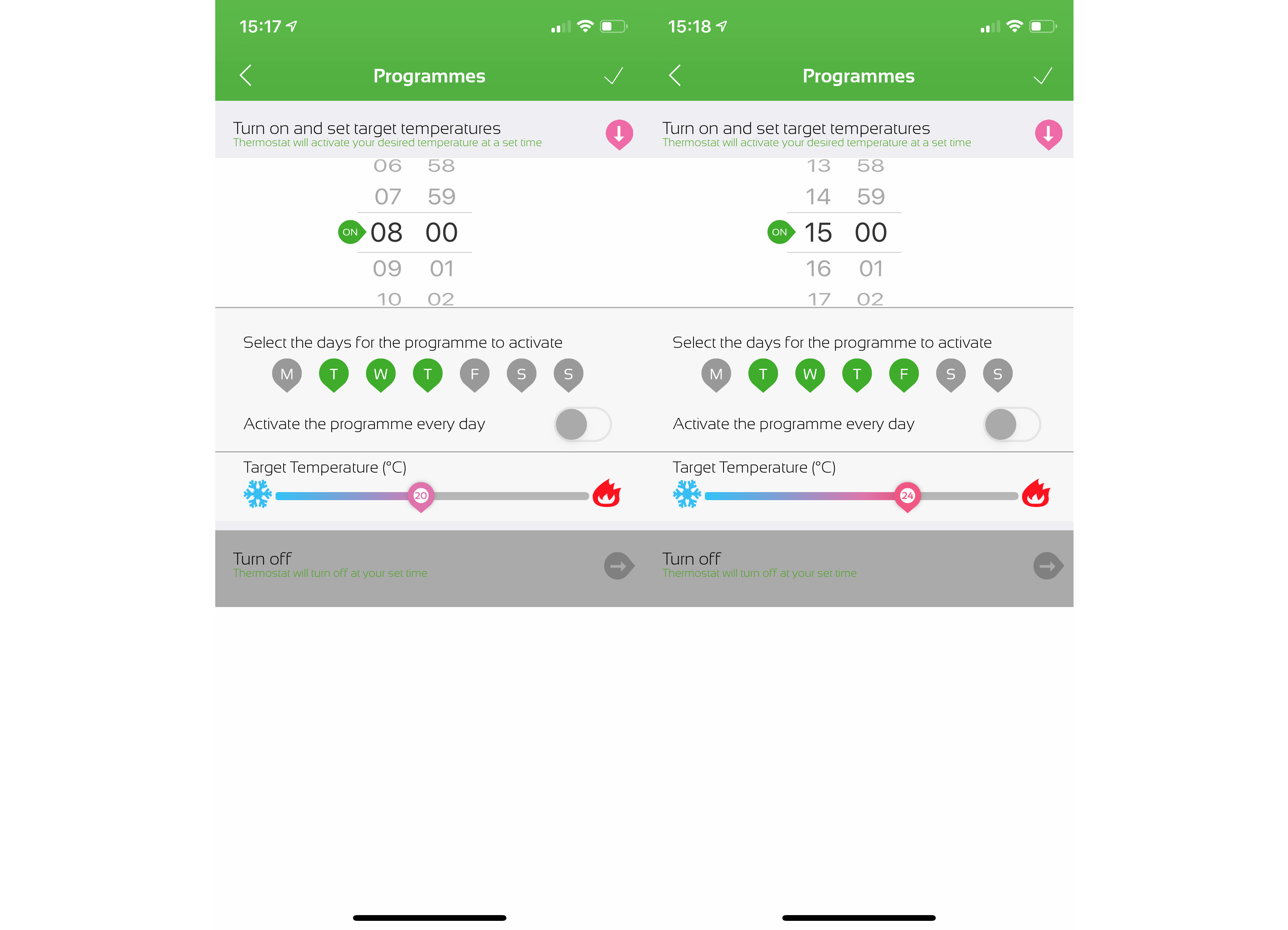
You can set a schedule per Energenie device
If a room has multiple radiators, you can group your eTRVs together. However, Groups doesn’t provide control over heating or temperature schedules, so you still have to configure each device manually.
Although the eTRVs control your temperature schedule, they don’t control your heating. For that, you need to add a smart thermostat. The stand-out feature is that the Energenie MiHome system can integrate with a Nest Learning Thermostat.
From the MiHome app, you get basic control over your Nest, including the ability to set the temperature, put it into Eco mode, and to change Nest’s mode (Home or Away); scheduling is controlled through the Nest app. So far, so good. However, if you turn up the heat on an eTRV, it doesn’t prompt the Nest to call for heat. As such, the eTRVs only control heating while your Nest has the boiler turned on.
Related: Best smart thermostat
There’s an option for each eTRV to Follow a Thermostat. With this option, the eTRV follows the temperature (and therefore the schedule) of the selected thermostat. So, turn up the temperature on your Nest, and all eTRVs set to follow this thermostat will change to the same temperature. If you go out, and your Nest switches to Eco mode, all following eTRVs will drop their temperature too.
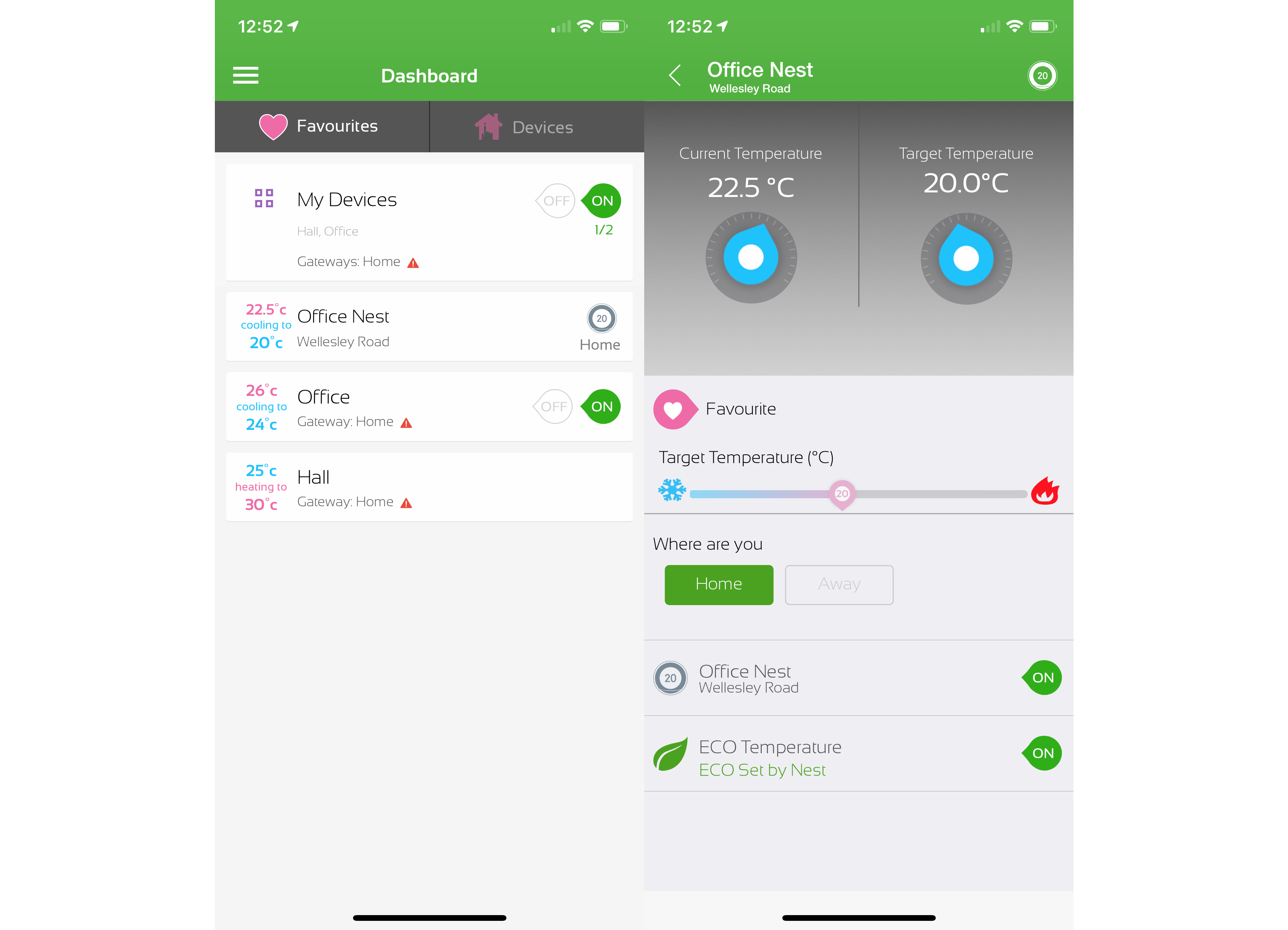
The Energenie MiHome Heating system integrates with Nest
This sounds like a good feature, but it’s actually less flexible than you think. Part of the benefit of having a multiroom heating system is that you can set each room to a different temperature to suit its location and comfort level. Configuring everything to match one central heating temperature is far less flexible.
Alternatively, you can add an Energenie MiHome Thermostat. This battery-powered box connects to your boiler’s on/off controls (there’s no OpenTherm option). It offers the same scheduling controls as the eTRVs, and you can also adjust the temperature manually using the side buttons. Its screen is hard to see, and I found that the thermostat took a few minutes to respond to temperature changes made in the app.

The Energenie MiHome Heating Thermostat is quite basic
You can set the eTRVs to follow the Energenie MiHome Thermostat – but, even with Energenie’s own products, there’s no way to make the eTRVs call for heat. That’s the real difference that sets products such as the Honeywell Evohome apart: with Evohome, turning up the temperature in one room turns on the boiler to deliver heat just to that radiator.
The Energenie MiHome Heating has advanced controls, but they can be fiddly to configure
The Energenie MiHome Heating system is part of a larger smart home ecosystem that includes motion sensors, window/door sensors and smart plugs. Using rules, you can integrate these devices into your heating system automatically. For example, you could turn down the temperature when a window is opened, or turn on a fan if it gets too hot in a room.
Such rules are simple to set up, but many smart heating systems will do some of these jobs automatically. For example, both Tado and Honeywell Evohome have automated window detection, which turns down the heating when you open a window.
With the Geofence option, you can have the MiHome Heating system turn off automatically when you go out, and turn back on when you return. Configuring the system is a bit of a pain. Geofence options are configured per group of devices.
Rather than giving you a map with a triggering radius shown, the MiHome app just asks you to set the trigger distance in feet, metres, kilometres or miles. Trying to figure out the most appropriate setting is difficult, and the starting options are hugely different between each scale.
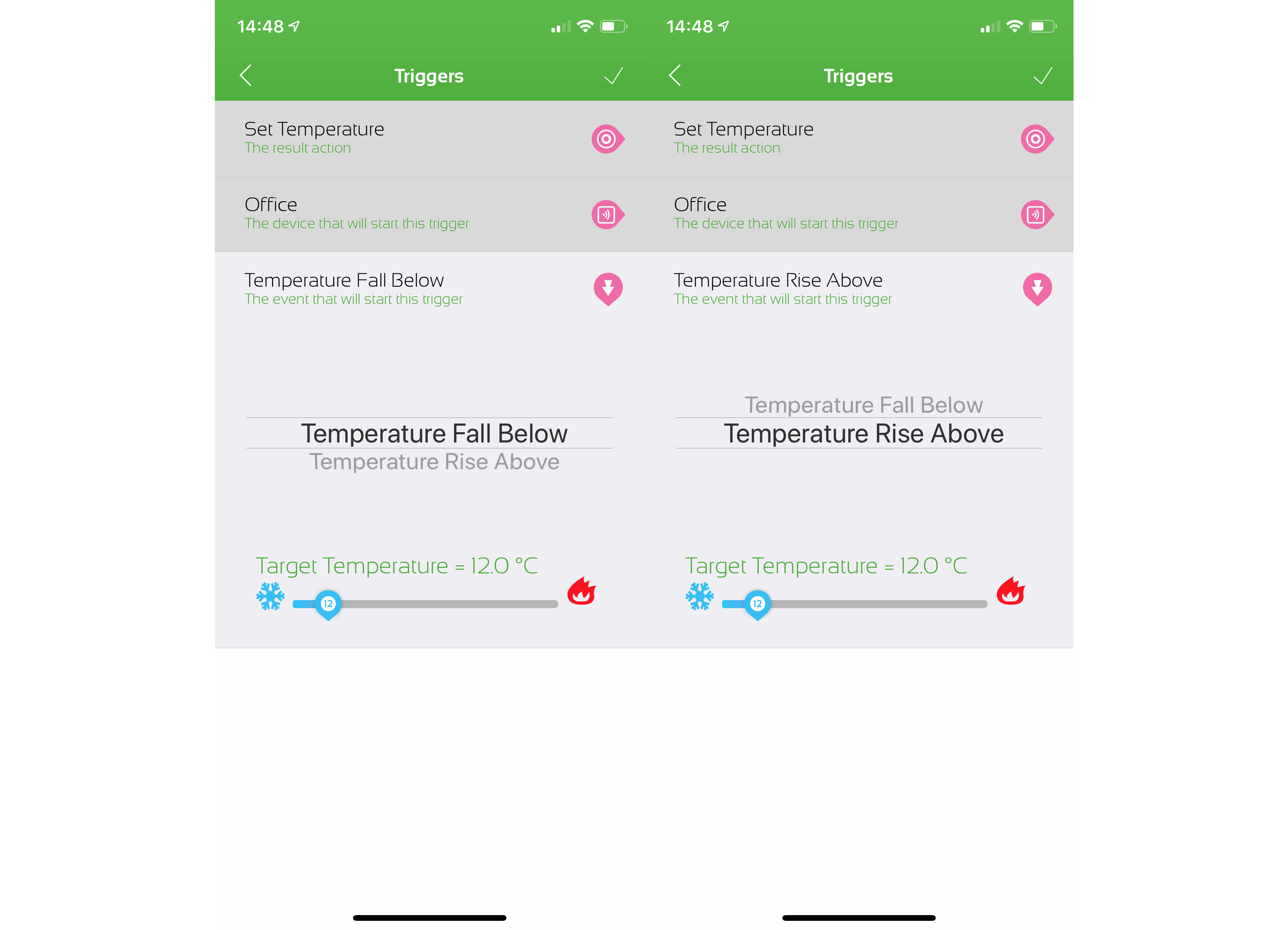
You can build some complex rules with the Energenie MiHome Heating system
For example, if you want to set the distance in feet, your starting option is 700-feet, which is 213 metres. Change to set the trigger distance in metres, and the option starts at 20 metres. Both kilometres and miles start at one. Having a map view with a clearly marked radius would be so much easier.
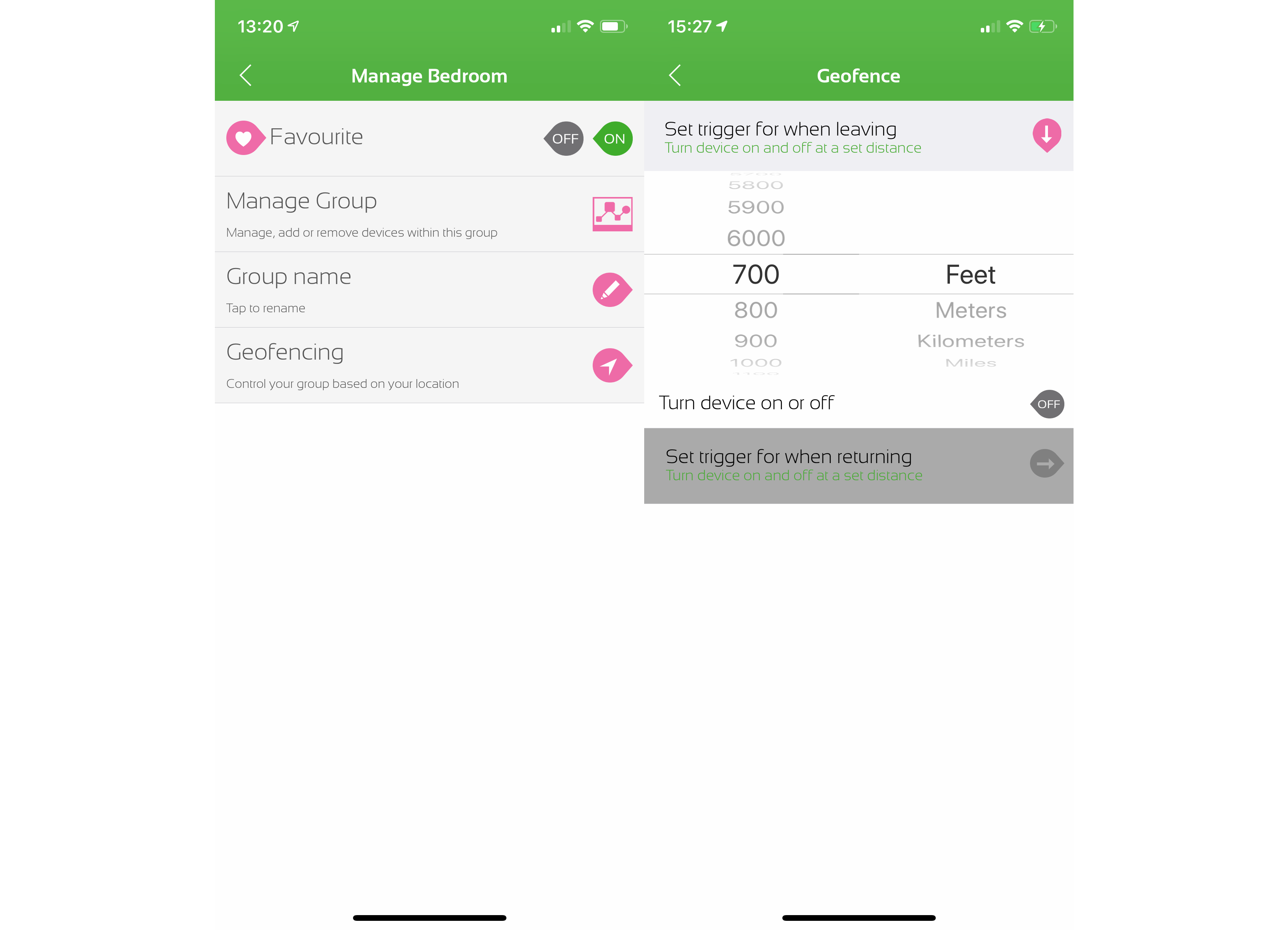
Geofencing options are a little fiddly to set up with Energenie
There’s an Amazon Alexa skill that lets you control each device’s temperature using your voice. The Alexa app would also let me control the Energenie Thermostat with on-screen controls, but the same wouldn’t work for an eTRV. A similar Google Home skill exists, with the same voice controls. This time, via the Google Home app, I could see and control both an eTRV and thermostat.
With a full IFTTT channel, you can easily programme other devices to react to your heating system – say, controlling a third-party smart plug to turn on a fan when a room becomes too hot. Plus, there’s decent control over Energenie MiHome Heating devices, too, with Actions to set a temperature or turn on/off a group of devices.
Why buy the Energenie MiHome Heating?
Although the Energenie MiHome Heating eTRVs are comparatively cheap and have the appeal of working with Nest, the reality of the system is quite different. Without the ability to call for heat, the eTRVs aren’t as useful as on a full multiroom heating system, such as the Honeywell Evohome.
On the one hand the Nest integration is neat , but the ability for an eTRV to follow this thermostat’s schedule isn’t as useful as you may think. Throw in the dated and clunky app, and the Energenie MiHome Heating system lags behind the top products in our Best smart thermostat guide.
If you have existing Energenie products, there’s more of an argument to buy the eTRVs for the integration it offers – but for everyone else, you can pick up better products with more features and simpler apps by looking elsewhere.


